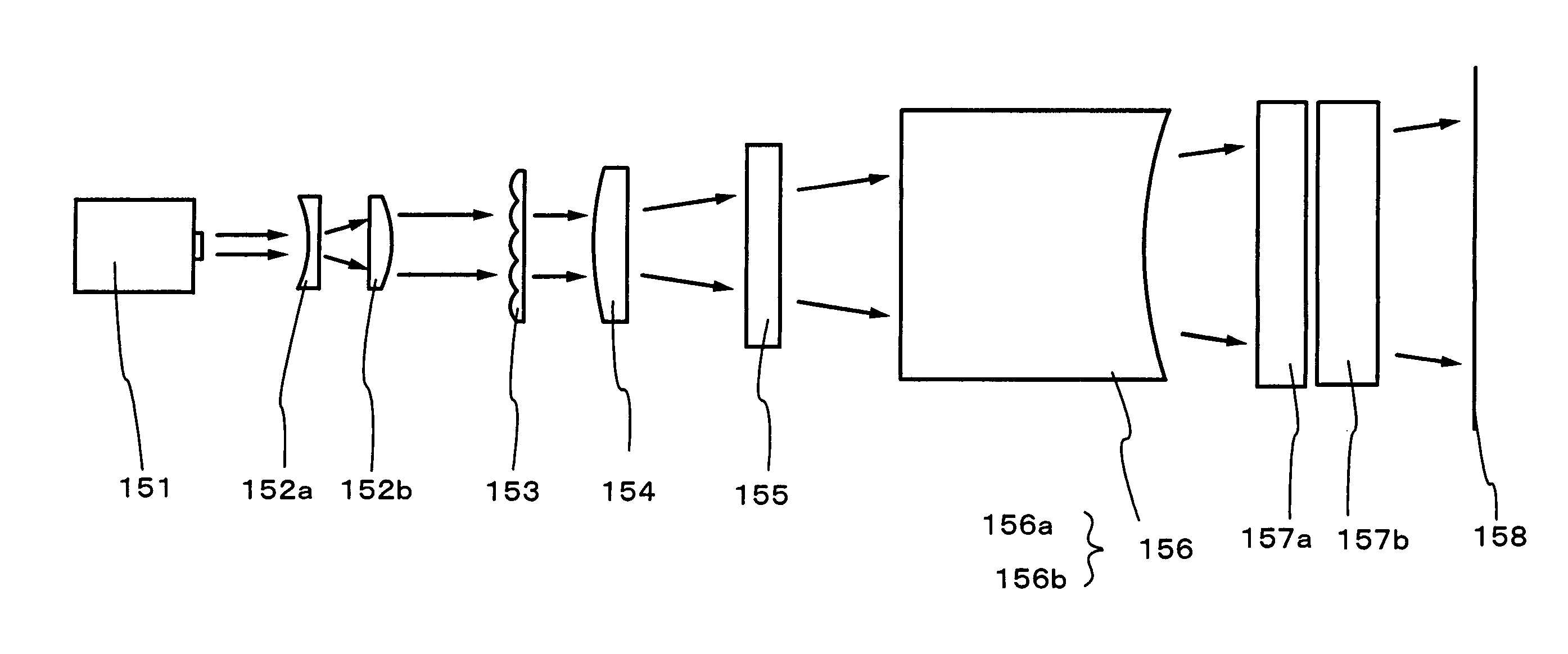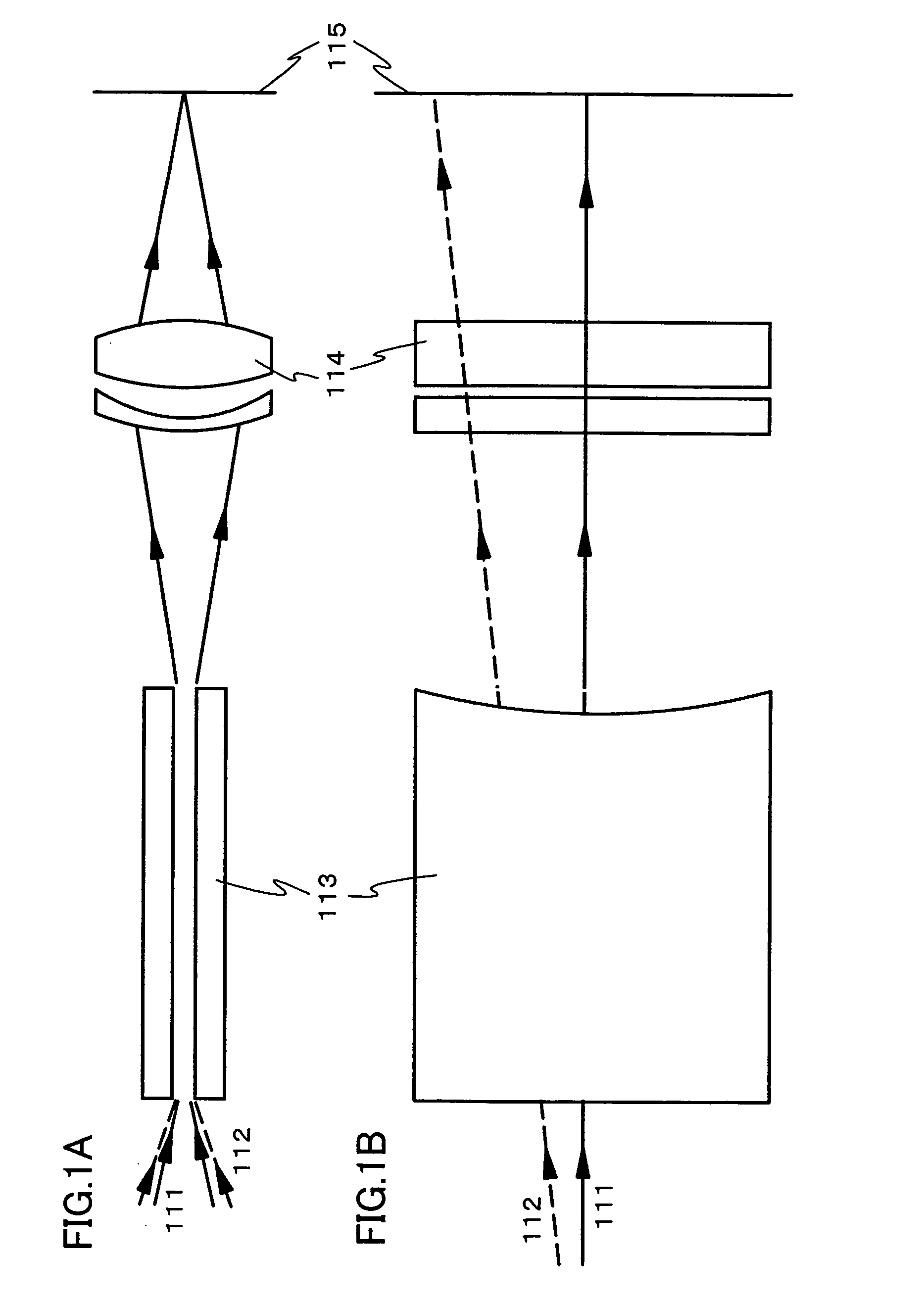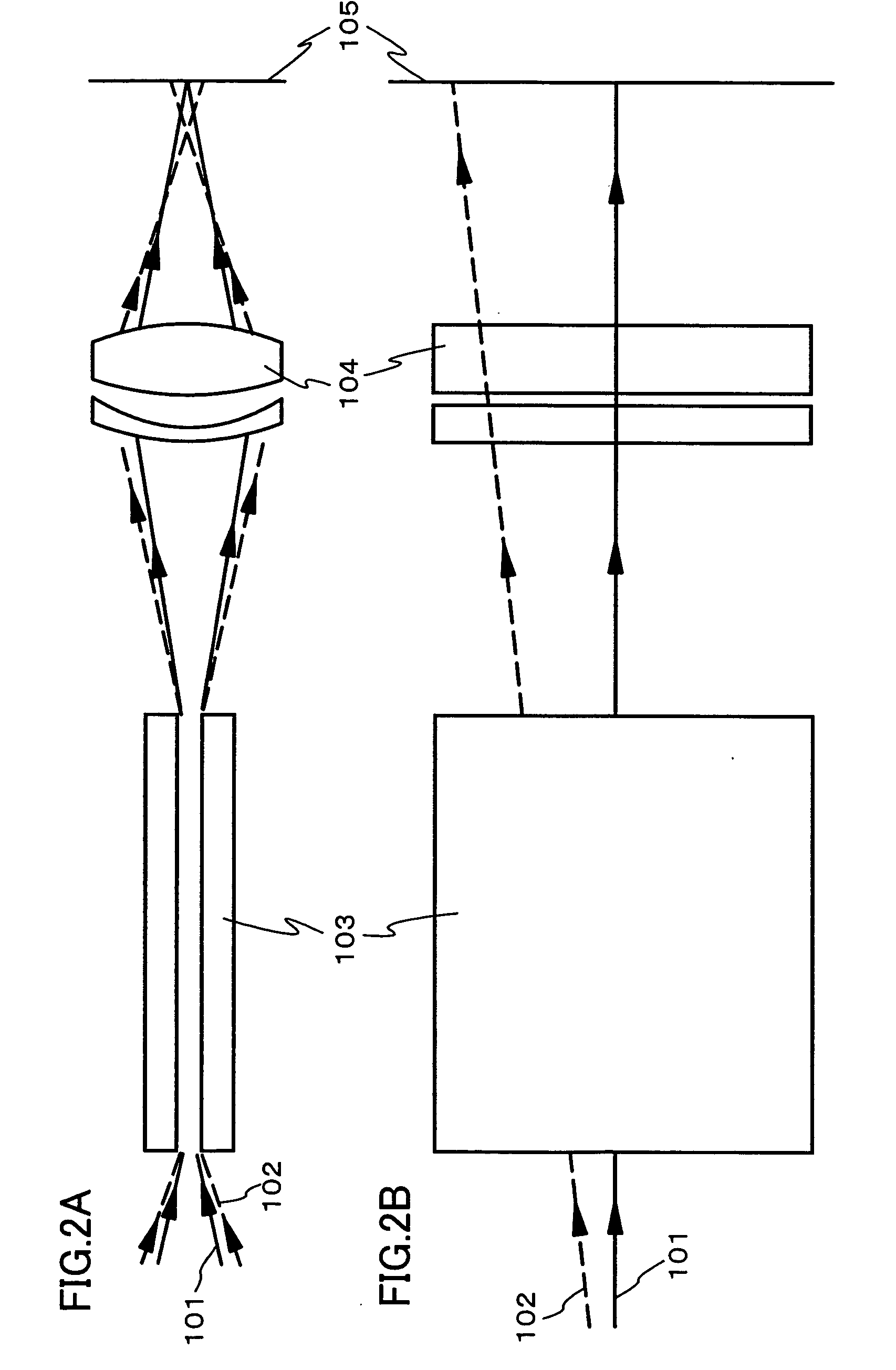Beam Homogenizer, laser irradiation apparatus, and method of manufacturing a semiconductor device
a laser irradiation and semiconductor technology, applied in the direction of forging/pressing/hammering apparatus, handling devices, instruments, etc., can solve the problems of low quality of laser irradiation apparatus, poor homogeneity of beam spots on the surface to be irradiated,
- Summary
- Abstract
- Description
- Claims
- Application Information
AI Technical Summary
Problems solved by technology
Method used
Image
Examples
embodiment 1
[0070] [Embodiment 1]
[0071] FIGS. 4A and 4B show an example of an optical system explained in this embodiment. First, a side view of FIG. 4B is explained. A laser beam emitted from a laser oscillator 151 is propagated to the direction indicated by an arrow in FIGS. 4A and 4B. The laser beam is expanded through spherical lenses 152a and 152b. This structure is not necessary when the beam spot emitted from the laser oscillator 151 is sufficiently large.
[0072] A cylindrical lens 155 having a thickness of 20 mm whose second surface has a radius of curvature of -194.25 mm is used to narrow the beam spot in the direction of the minor axis of the rectangular beam. The sign of the radius of curvature is positive when the center of the curvature is on the side where the beam is emitted with respect to the lens surface. The sign is negative when the center of the curvature is on the side where the beam is incident with respect to the lens surface. In addition, it is noted that a lens surface ...
embodiment 2
[0078] [Embodiment 2]
[0079] This embodiment exemplifies another optical system which is different from the optical system described in the embodiment mode. FIGS. 5A and 5B show the example of the optical system explained in this embodiment.
[0080] In FIGS. 5A and 5B, the laser beam goes through the same optical path as that shown in FIGS. 3A and 3B except for an optical waveguide 165. The optical waveguide 165 has a pair of reflection planes provided oppositely as well as the optical waveguide 135. The optical waveguide 135 has a hollow space between the pair of reflection planes. On the other hand, the optical waveguide 165 has the space filled with the medium 165c having a refractive index of "n". This is the different point between the two optical waveguides. In the case that the medium 165c has higher refractive index than the material of the reflection planes 165a and 165b, when the laser beam is incident into the optical waveguide 165 at an angle not more than the critical angl...
embodiment 3
[0083] [Embodiment 3]
[0084] In this embodiment, a process up to manufacture a semiconductor device with the crystalline semiconductor film by using the laser irradiation apparatus of the present invention is described with FIG. 8A-8D and FIG. 9A-9D.
[0085] First of all, base films 1101a and 1101b are formed on the substrate 1100. As the substrate 1100, an insulating substrate such as a glass substrate, a quartz substrate, or a crystalline glass substrate, or a ceramic substrate, a stainless substrate, a metal substrate (tantalum, tungsten, molybdenum, and the like), a semiconductor substrate, a plastic substrate (polyimide, acrylic, polyethylene terephthalate, polycarbonate, polyarylate, polyether sulfon and the like) can be used. It is noted that the substrate shall be made from the material that can resist the heat generated through the processes. A glass substrate is used in this embodiment.
[0086] As the base films 1101a and 1101b, a silicon oxide film, a silicon nitride film or a...
PUM
| Property | Measurement | Unit |
|---|---|---|
| Shape | aaaaa | aaaaa |
| Distribution | aaaaa | aaaaa |
| Aspect ratio | aaaaa | aaaaa |
Abstract
Description
Claims
Application Information
 Login to View More
Login to View More - R&D
- Intellectual Property
- Life Sciences
- Materials
- Tech Scout
- Unparalleled Data Quality
- Higher Quality Content
- 60% Fewer Hallucinations
Browse by: Latest US Patents, China's latest patents, Technical Efficacy Thesaurus, Application Domain, Technology Topic, Popular Technical Reports.
© 2025 PatSnap. All rights reserved.Legal|Privacy policy|Modern Slavery Act Transparency Statement|Sitemap|About US| Contact US: help@patsnap.com



